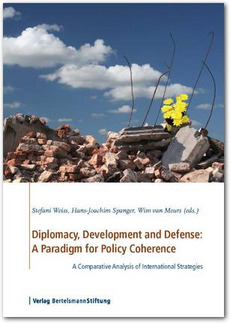A Comparative Analysis of International Strategies

Stefani Weiss, Hans-Joachim Spanger, Wim van Meurs (ed.)
Diplomacy, Development and Defense: A Paradigm for Policy Coherence
- Format Type
- E-Book / PDF
- Date of publication
- 30/07/2010
- ISBN
- 978-3-86793-257-8
- Edition
- 1. edition
- Volume/Format
- 366 pages, E-Book
- Delivery status
- Available
Format
- E-Book/ePub 3,99 €
-
E-Book/PDF
Description
The end of the Cold War radically changed both classic policies of national and collective security and international strategies for conflict management and the stabilization of precarious states. The threat of Islamic extremism and the wars in Afghanistan and Iraq have shattered any illusions of a peace dividend and have given strategies against state failure a new urgency.
The growing awareness of the complex and intertwined problems of human security, socioeconomic underdevelopment and governance deficits as root causes of precarious statehood made policy coherence the new mantra for Western national governments and international organizations. Henceforth, it was envisaged to relinquish the existing division between diplomacy, development and defense in favour of the new comprehensive "3D"-approach.
This book is an attempt to assess the extent to which both international organizations and states have lived up to the new insights of the "3D" continuum and adopted strategies corresponding institutional settings and policy instruments to provide the necessary culture of policy coherence for tackling the problems of precarious statehood and the international security challenges those states pose. On the national level, the cases studied are the United States, the United Kingdom, Germany and the Netherlands. On the international level, the United Nations and the European Union were examined.
It is hoped, that the lessons learned from whole-of-government approaches and the recommendations drawn from this survey will help both governments and international organizations to excel in dealing with precarious states, thereby making policy coherence a reality in risk assessment, decision-making and policy implementation.



